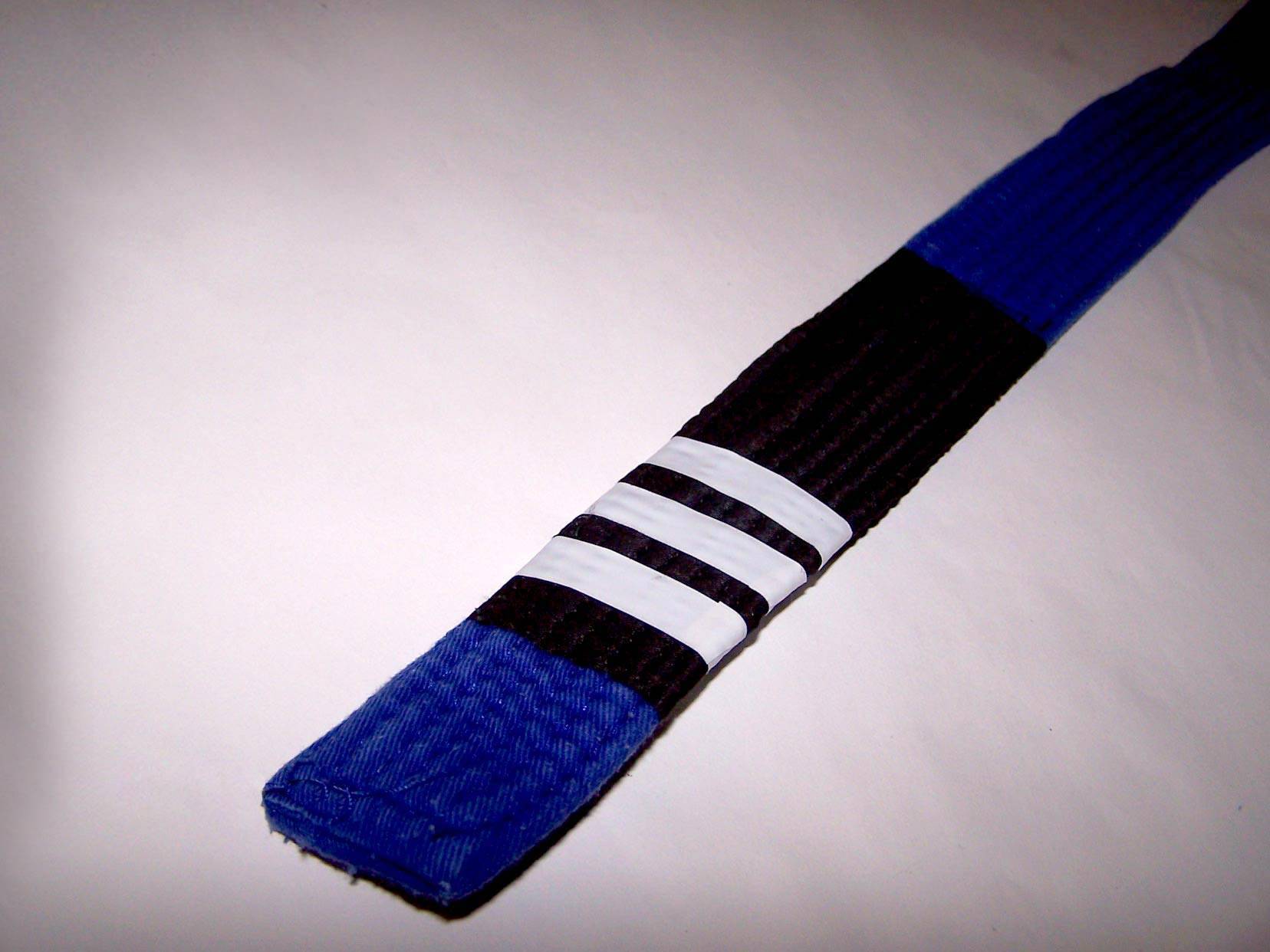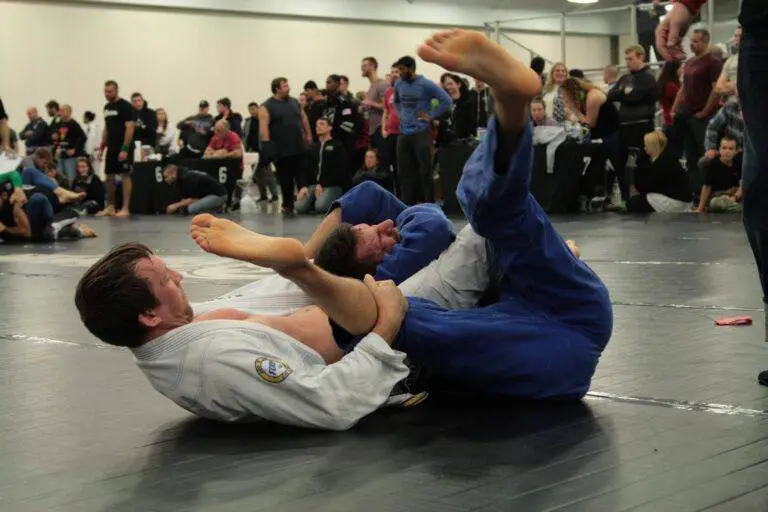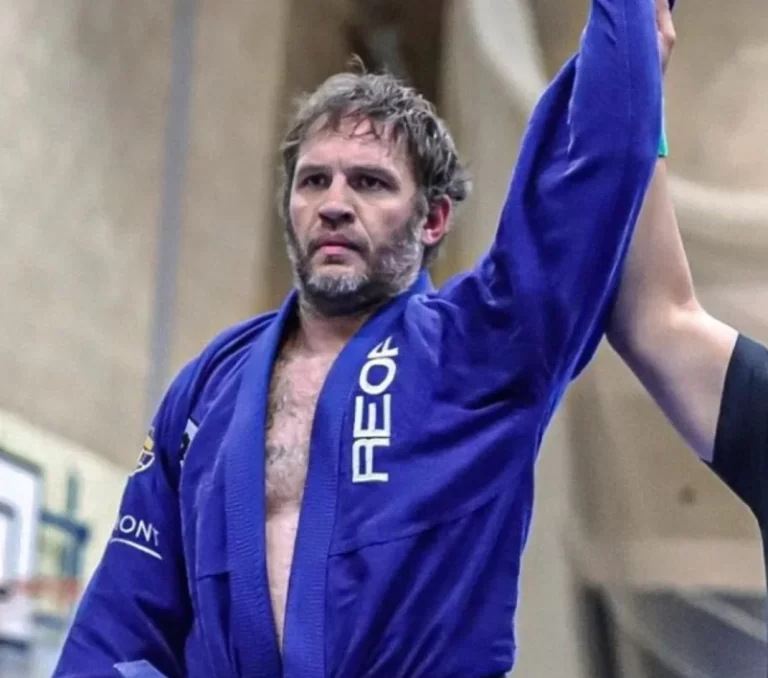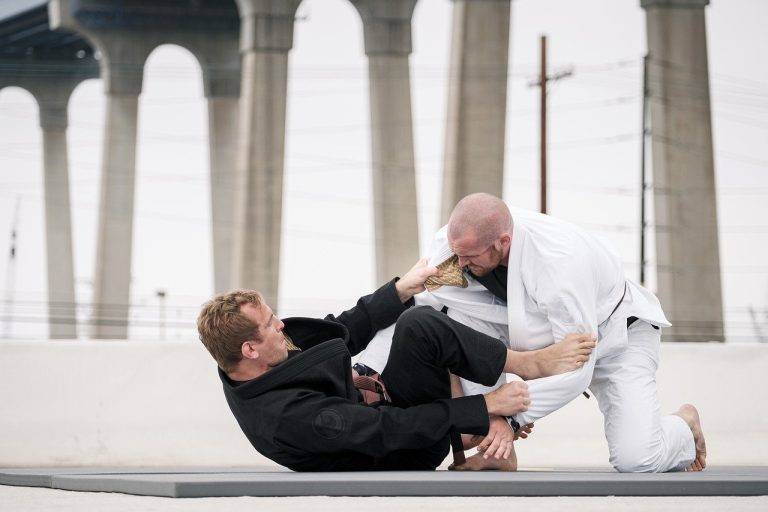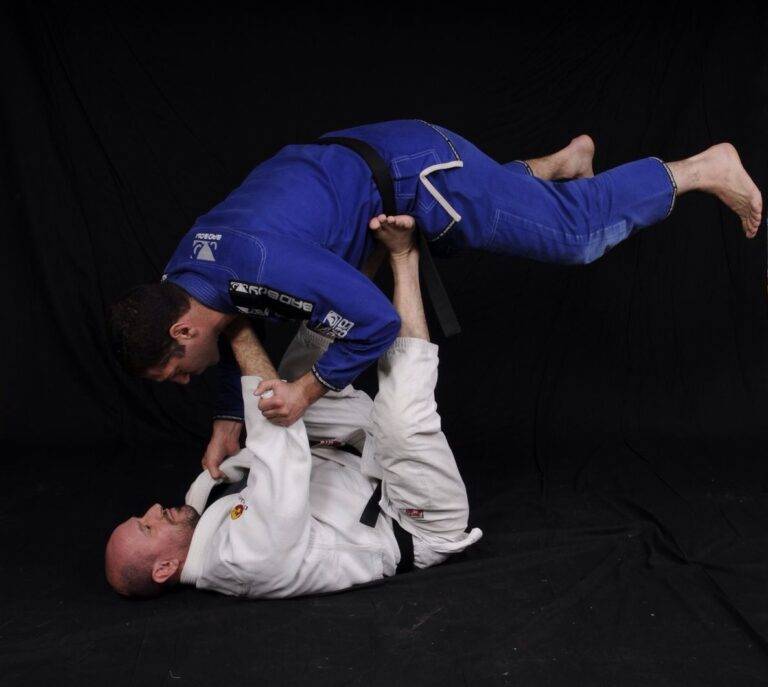How to Tie a BJJ Belt: Mastering the Art of Belt Tying
As a practitioner of Brazilian Jiu-Jitsu, you understand the significance of the belt in your journey through this martial art. It’s not just a mere accessory, but a symbol of your progress, dedication, and skill level. Tying your belt properly is not only essential for practical reasons but also reflects respect for the art and its traditions. In this comprehensive guide, we will delve into the intricacies of tying a BJJ belt, ensuring that you master the art of belt tying with finesse and precision.
Introduction
First we will dive into how you actually tie your belt. IF you’re just starting out, there is no shame in looking for help with this.
After this we will look at some common mistakes and troubleshooting with tying the belt. Later we will touch on what the belt means – it is crucial to understand the significance of the belt colors and the hierarchical structure they represent. In BJJ, belts are not just fashion statements; they represent your journey and progress through the ranks. In the world of Brazilian Jiu-Jitsu, the belt holds immense significance. It serves as a visual representation of one’s progress, experience, and skill level within the art. Understanding the hierarchy and significance of belt colors is essential for any practitioner.
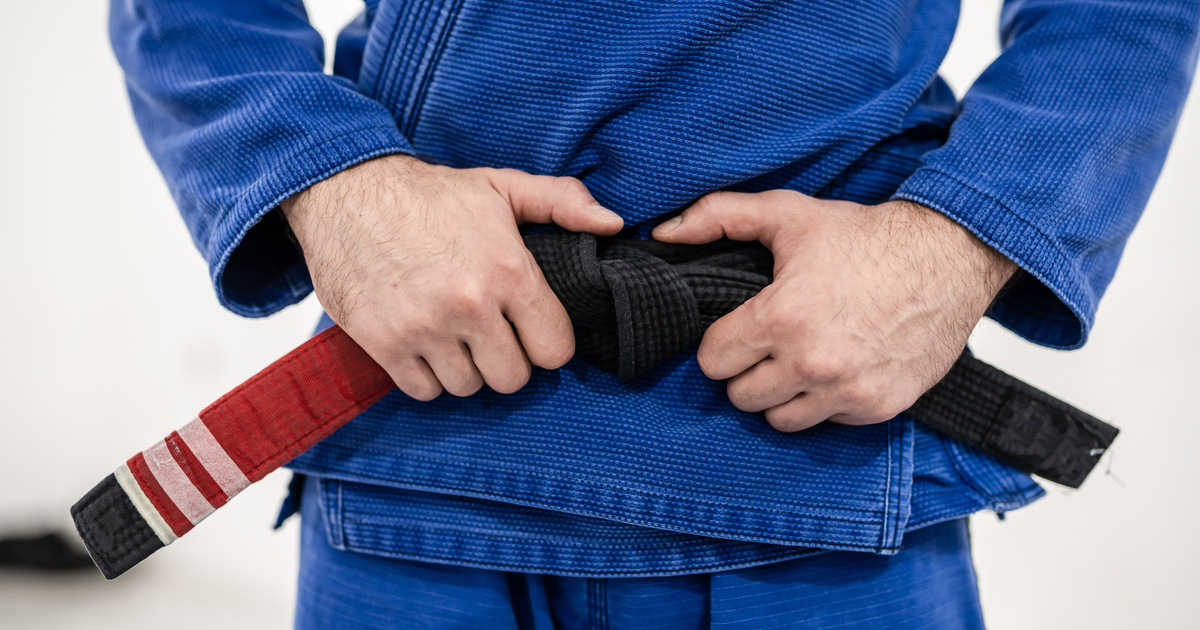
Step-by-Step Guide: Tying a BJJ Belt
Now that we grasp the importance of the belt in BJJ, let’s explore the various methods for tying a BJJ belt. We will begin with the traditional method, which is widely practiced and holds deep-rooted significance in the BJJ community. Through detailed instructions, we will guide you through each step, from folding the belt correctly to achieving the desired tightness. Additionally, we will introduce alternative methods such as the “double wrap” and “quick release” techniques, giving you options to find the style that suits you best.
Troubleshooting and Common Mistakes
Even with the step-by-step guide, challenges may arise when tying a BJJ belt. In this section, we will address common issues that practitioners face and provide solutions to overcome them. Whether your belt slips during training, you struggle to achieve the desired tightness, or the belt ends seem uneven, we have you covered with practical tips and techniques. By troubleshooting these common mistakes, you will be able to tie your belt securely and confidently.
Step-by-Step Guide: Tying a BJJ Belt
Now that we have a comprehensive understanding of the significance of the BJJ belt, it’s time to delve into the practical aspect of tying it. Tying a BJJ belt is more than just a functional task; it is an art form that reflects the discipline, respect, and commitment inherent in the practice of Brazilian Jiu-Jitsu. In this section, we will provide you with a step-by-step guide on how to tie a BJJ belt properly, ensuring that you are able to secure it with confidence and precision.
Overview of the Common Methods for Tying a BJJ Belt
Before we jump into the specific techniques, let’s briefly explore the different methods commonly used to tie a BJJ belt. While the traditional method is most prevalent, there are alternative approaches that some practitioners find more suitable for their preferences. By understanding the various options available, you can choose the method that works best for you.
Detailed Instructions: Traditional Method of Tying a BJJ Belt
- Hold your belt in both hands and place it flat against your belly. The label of the belt is facing away from you. Space the belt evenly so you’re holding
- Pull the belt around your waist as you cross the sides behind you. Feed each side to the opposite hand and bring the ends in front of you.
- Adjust as needed so that you are now holding two ends of roughly equal length.
- Cross the left side over the right side of the belt, then bring it underneath and back up behind all folds. You should now have a left side hanging coming out from under the belt and a right side coming out from over.
- Now cross the right side back over the left side, leaving a small gap between them. Then pull that side under through the gap, this should form a not.
- Pull both ends and adjust to your level of comfort for tightness!
To see the above steps in video, check out the below quick summary from PJ Broome:
Alternative Methods for Tying a BJJ Belt
While the traditional method is widely practiced and holds cultural significance, some practitioners prefer alternative ways of tying their BJJ belts. Heres an older video Rener Gracie with a great breakdown of various methods for Belt Ties including the standard, hollywood and superlock variations.
By exploring these alternative methods, you can find the style that suits your preferences and needs. Remember, the most important aspect is to tie your belt with care, ensuring that it is secure and reflects the respect you have for the art of Brazilian Jiu-Jitsu.
Troubleshooting and Common Mistakes
Even with a thorough understanding of the techniques involved in tying a BJJ belt, it’s not uncommon to encounter challenges along the way. In this section, we will address common issues that practitioners face when tying their BJJ belts and provide practical solutions to overcome them. By troubleshooting these common mistakes, you will be able to tie your belt securely and confidently.
Belt Slipping or Coming Undone During Training
One of the most frustrating issues that practitioners may encounter is their BJJ belt slipping or coming undone during training sessions. This can be distracting and interrupt the flow of your practice. Fortunately, there are a few strategies you can implement to address this problem:
- Double Wrap Method: Consider using the “double wrap” method mentioned earlier. By wrapping the belt around your waist twice before tying it, you provide additional security and minimize the chances of it coming undone.
- Tighten the Knot: Ensure that you tie the knot tightly, but not excessively so. Find the right balance between a secure knot and comfort. Experiment with different tightness levels until you find what works best for you.
- Readjust During Breaks: Take advantage of breaks between drills or rolls to check the tightness of your belt. If you notice it starting to loosen, take a moment to retighten it to avoid any potential slipping or coming undone.
Difficulty in Achieving the Desired Tightness
Achieving the desired tightness of your BJJ belt can be a personal preference, and it might take some trial and error to find the perfect balance. Here are some tips to help you achieve the desired tightness:
- Practice Consistency: Develop a consistent technique for tying your belt. This will help you maintain a similar level of tightness each time you tie it.
- Adjust the Length: If you find it challenging to achieve the desired tightness, consider adjusting the length of your belt. Experiment with different lengths until you find the sweet spot that offers both comfort and security.
Uneven Length of the Belt Ends
Another common issue that practitioners may encounter is having uneven lengths of the belt ends after tying. While it may not affect the functionality of the belt, having uneven ends can be aesthetically displeasing to some individuals. Here’s how you can address this:
- Symmetrical Folding: Ensure that you fold the belt symmetrically at the beginning of the tying process. This will help maintain even lengths of the belt ends when tying the knot.
- Adjust During Tying: Pay attention to the lengths of the belt ends as you tie the knot. If you notice any discrepancies, adjust the lengths accordingly by pulling or loosening the ends.
By troubleshooting these common mistakes and implementing the recommended solutions, you will be able to overcome challenges and tie your BJJ belt securely. Remember, practice makes perfect, so don’t be discouraged if you encounter difficulties initially. With time and experience, you will become more proficient in tying your belt with precision and confidence.
Additional Tips and Considerations
Beyond the technical aspects of tying a BJJ belt, there are additional tips and considerations that can enhance your overall experience and understanding of this essential ritual. Let’s explore some of these factors to help you develop a deeper appreciation for the BJJ belt and its significance.
Proper Care and Maintenance of a BJJ Belt
While tying your BJJ belt is an integral part of the practice, it is equally important to take care of your belt to ensure its longevity and preserve its significance. Here are some tips for maintaining your BJJ belt:
- Wash occasionally: This is a controversial one! But it’s generally accepted that you don’t need to wash your belt after every session, like you would your other gear. Of course practice good hygiene and wash it occasionally or when necessary.
- Air Dry: Allow your belt to air dry after training sessions. Hanging it in a well-ventilated area will help prevent any unwanted odors or moisture buildup.
- Respectful Handling: Treat your belt with respect both on and off the mat. Avoid using it for any purposes other than training and competition. This shows reverence for the art and the dedication you have put into your practice.
Etiquette and Customs Related to Tying and Wearing a BJJ Belt
In the world of BJJ, there is a rich culture and etiquette associated with tying and wearing a belt. Understanding and adhering to these customs not only shows respect for the art but also fosters a sense of unity within the BJJ community. Here are a few key etiquettes to keep in mind:
- Tying the Belt Before Class: It is customary to tie your belt before stepping onto the mat. This demonstrates your readiness to train and signifies your commitment to the art.
- Handling Others’ Belts: Treat other practitioners’ belts with utmost respect. Avoid touching or adjusting someone else’s belt without their permission.
- Belt Presentation: During belt promotions, it is customary to have your instructor or a higher-ranking practitioner tie your new belt around your waist. This is a symbolic moment that acknowledges your progress and the trust placed in you by your instructor.
Different Belt Colors and Their Significance in BJJ Hierarchy
BJJ makes use of a colored belt system to designate the skill and experience level of practitioners. The belt colors typically follow a specific order: white, blue, purple, brown, and black. Each color represents a different stage of learning, with black being the highest attainable rank. The transition from one belt color to another symbolizes growth and mastery of techniques, demonstrating the practitioner’s commitment and dedication.

How Belts Are Awarded and the Significance of Belt Promotions
Belt promotions in BJJ are not handed out lightly; they are earned through hard work, consistent training, and the demonstration of skill and knowledge. The responsibility of awarding belts lies with the instructor, who assesses the student’s progress and determines when they are ready to advance. Belt promotions are often celebrated with ceremonies, reflecting the significance of the achievement and the recognition of a practitioner’s dedication and growth.
In addition to the traditional belt colors, some academies may have intermediate belt colors, such as white with a stripe or a colored tip, to further differentiate between skill levels. These intermediate belts serve as stepping stones on the journey towards the next major belt rank and provide additional motivation and opportunities for growth.
For an in-depth guide about Belt Ranks in BJJ, check out this post.
Resources for Further Learning and Improving Belt Tying Skills
If you want to further enhance your belt tying skills or deepen your knowledge of BJJ, there are numerous resources available. Consider the following:
- Online Tutorials: Many reputable BJJ academies and practitioners offer online tutorials specifically focused on tying a BJJ belt. These tutorials provide detailed instructions and additional tips to refine your technique.
- Books and DVDs: Explore the wide range of instructional books and DVDs dedicated to BJJ. Some of these resources may include sections on tying a BJJ belt, providing valuable insights and techniques.
- Seek Guidance from Instructors: Your instructor is an invaluable resource when it comes to refining your belt tying skills. Don’t hesitate to ask for guidance, tips, or feedback during your training sessions.
By embracing these additional tips and considerations, you will deepen your connection to the BJJ belt, its cultural significance, and its role in your personal journey as a practitioner. Now that we have covered these important aspects, let’s move on to the concluding section of this comprehensive guide.
Conclusion: Mastering the Art of Tying a BJJ Belt
Congratulations! You have now embarked on a journey to master the art of tying a BJJ belt. Through this comprehensive guide, we have explored the significance of the BJJ belt, the step-by-step process of tying it, troubleshooting common mistakes, additional tips and considerations, and the cultural aspects associated with this ritual. By following the techniques and advice provided, you will be able to tie your BJJ belt confidently, securely, and with a deep understanding of its symbolism.
Remember, tying your belt is not just a practical task; it is a representation of your dedication, progress, and respect for the art of Brazilian Jiu-Jitsu. As you continue your training and journey in BJJ, strive to embrace the values and traditions associated with the belt, treating it as more than just a piece of fabric. Let it remind you of your growth, perseverance, and continuous improvement on and off the mat. Oss!!
- Buggy Choke: The Complete Guide - March 6, 2024
- Jiu Jitsu World League: Your Complete Guide - March 5, 2024
- How much do UFC referees make? A comprehensive guide - March 5, 2024

